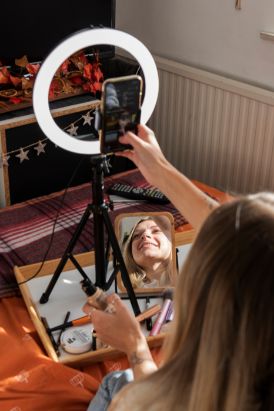
How to Add Captions on TikTok: A Comprehensive Guide to Enhancing Your Content
Learning how to add captions on TikTok is an essential skill for creators looking to maximize the reach and accessibility of their content. Captions not only make your videos more inclusive for hearing-impaired viewers but also enhance engagement by allowing users to understand your content even when watching without sound. In this comprehensive guide, we’ll explore various methods to add captions to your TikTok videos, along with best practices and tips for creating effective captions.
TikTok has recognized the importance of captions and has introduced several features to make captioning easier for creators. From auto-generated captions to manual text overlays, the platform offers multiple ways to ensure your message is conveyed clearly to all viewers.

Why Add Captions to Your TikTok Videos?
Before diving into the how-to, let’s understand the benefits of adding captions:
- Increased Accessibility: Makes content available to deaf and hard-of-hearing viewers
- Improved Engagement: Many users watch videos without sound, captions keep them engaged
- Better Comprehension: Helps viewers understand content in noisy environments or non-native languages
- SEO Benefits: Captions can improve discoverability within TikTok’s search function
- Compliance: Meets accessibility standards and legal requirements in some regions
Methods to Add Captions on TikTok
TikTok offers several ways to add captions to your videos. Let’s explore each method:
1. Auto-Generated Captions
TikTok’s auto-caption feature uses AI to generate captions automatically. Here’s how to use it:
- Record or upload your video to TikTok
- On the editing screen, tap “Captions” at the top right
- TikTok will generate captions automatically
- Review and edit the captions for accuracy
- Tap “Save” to apply the captions to your video
2. Manual Text Overlays
For more control over your captions, you can add them manually:
- After recording or uploading your video, tap “Text” on the editing screen
- Type your caption and adjust its appearance (font, color, size)
- Position the text where you want it on the screen
- Set the duration for each text overlay to match your speech
- Repeat for each segment of your video
3. Third-Party Captioning Tools
For more advanced captioning needs, consider using third-party tools:
- Kapwing: Offers automatic and manual captioning with stylization options
- MixCaptions: Specializes in creating animated captions for social media
- Zubtitle: Provides auto-captioning with easy editing features
These tools can offer more flexibility and features than TikTok’s built-in options, especially for longer or more complex videos.
Best Practices for TikTok Captions
To ensure your captions are effective and enhance your content, follow these best practices:
1. Keep Captions Concise
- Use short, easy-to-read phrases
- Break long sentences into multiple caption segments
- Aim for no more than 2-3 lines of text on screen at once
2. Ensure Readability
- Choose fonts that are clear and easy to read
- Use contrasting colors for text and background
- Consider adding a semi-transparent background behind text for better visibility
3. Time Captions Accurately
- Sync captions precisely with spoken words
- Allow sufficient time for viewers to read each caption
- Use punctuation to indicate pauses and intonation
4. Include Non-Speech Sounds
- Caption relevant background noises or music cues
- Use descriptive terms for sounds (e.g., [applause], [laughter])
- Include speaker identification for multi-person videos
5. Edit and Proofread
- Review auto-generated captions for errors
- Correct any misspellings or grammatical mistakes
- Ensure captions accurately reflect the spoken content
Advanced Captioning Techniques
For creators looking to take their captions to the next level, consider these advanced techniques:
1. Stylized Captions
- Use different colors or fonts to distinguish between speakers
- Experiment with animated text for emphasis
- Incorporate emojis or symbols to add visual interest
2. Multilingual Captions
- Provide captions in multiple languages for international audiences
- Use translation tools to create accurate multilingual captions
- Consider cultural context when translating content
3. Creative Text Placement
- Position captions to complement visual elements in your video
- Use motion tracking to make captions follow moving subjects
- Experiment with text layout to create visually appealing designs
Troubleshooting Common Captioning Issues
Even with careful preparation, you may encounter some challenges when adding captions. Here’s how to address common issues:
1. Auto-Caption Inaccuracies
- Always review and edit auto-generated captions
- Speak clearly and at a moderate pace when recording to improve accuracy
- Use manual captioning for complex or technical content
2. Timing Sync Issues
- Use TikTok’s editing tools to adjust caption timing
- Break longer captions into shorter segments for better sync
- Consider re-recording problematic sections if timing is off
3. Caption Visibility Problems
- Adjust text color and size for better contrast
- Use a semi-transparent background or outline for text
- Position captions to avoid covering important visual elements
The Future of Captioning on TikTok
As TikTok continues to evolve, we can expect advancements in captioning technology and features:
- Improved AI Captioning: More accurate and context-aware auto-generated captions
- Real-Time Translation: Instant translation of captions into multiple languages
- Interactive Captions: Clickable captions that provide additional information or links
- Voice-to-Text Improvements: Better recognition of accents and specialized terminology
- Customizable Caption Styles: More options for personalizing caption appearance
Conclusion
Adding captions to your TikTok videos is a powerful way to enhance the accessibility, engagement, and reach of your content. Whether you choose to use TikTok’s built-in features, manual text overlays, or third-party tools, captioning your videos can significantly improve your TikTok strategy. Remember to follow best practices for clarity and readability, and don’t be afraid to get creative with your caption style to match your brand’s personality.
As you incorporate captions into your TikTok content, continue to experiment with different techniques and stay updated on new features and tools. By prioritizing accessibility and user experience through effective captioning, you’ll not only expand your audience but also create more engaging and inclusive content for all TikTok users.


